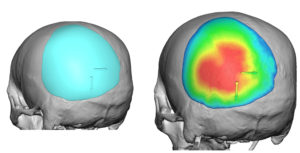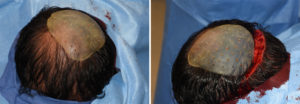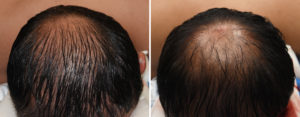Background: Plagiocephaly is a well known congenital condition that results in a variety of craniofacial skeletal malformations. One of the most consistent findings is that of flatness of the back of the head. This flatness occurs as a result of the overall twisting rotation of the skull around its vertical axis. The flatness on one side of the back of the head is often accompanied by some protrusion on the opposite side of the occiput. This protrusion may only appear so because of the contralateral flatness or may be actually beyond what the normal shape would be.
Beyond infancy there is no non-surgical treatment for occipital plagiocephaly. As an adult surgical contouring through bone removal and reshaping is also not a viable option. For a largely cosmetic deformity the magnitude of the surgery does not justify the associated risks and inevitable contour deformities that would result. This leaves the only treatment for asymmetries of the back of the head as an onlay approach.
Building out the back of the head by expanding the bone contour can be done using a variety of bone cements or silicone implants. The concept of custom skull implants has proven to be the superior technique as it allows the exact implant design to be determined before surgery. In addition it allows the surgery to be done through the smallest scalp incision.



Highlights:
1) The most common presentation of plagiocephaly is flatness on one side of the back of the head.
2) The best correction for occipital plagiocephaly in adults is a custom occipital inplant made from a 3D CT scan.
3) A custom occipital implant is placed through a low occipital hairline incision from the prone position during surgery.
Dr. Barry Eppley
Indianapolis, Indiana





